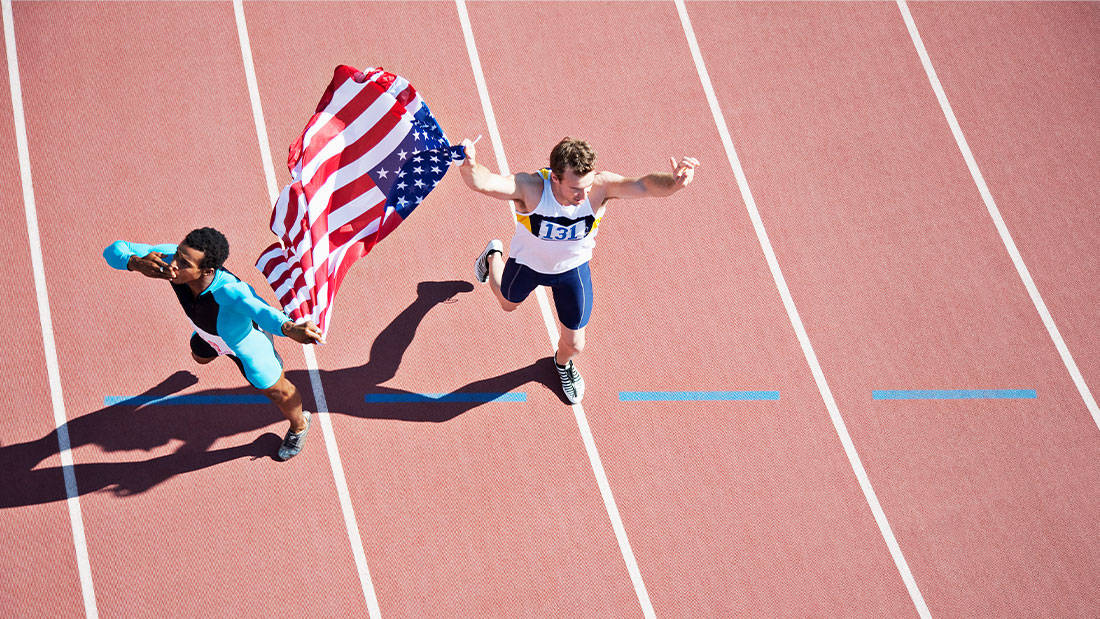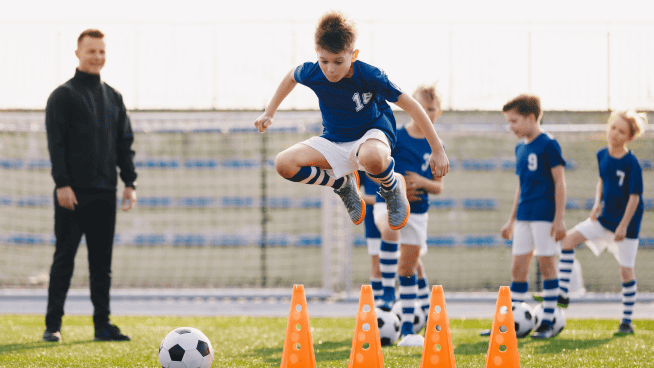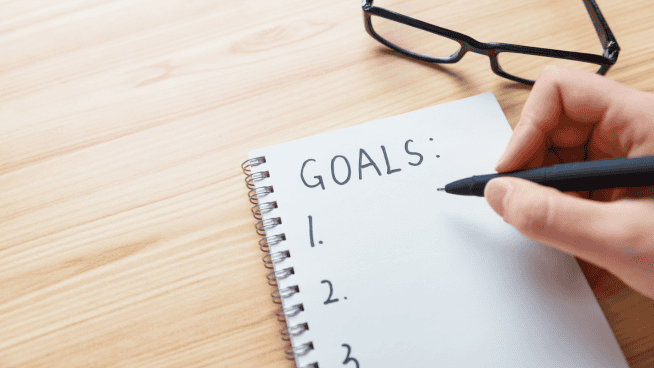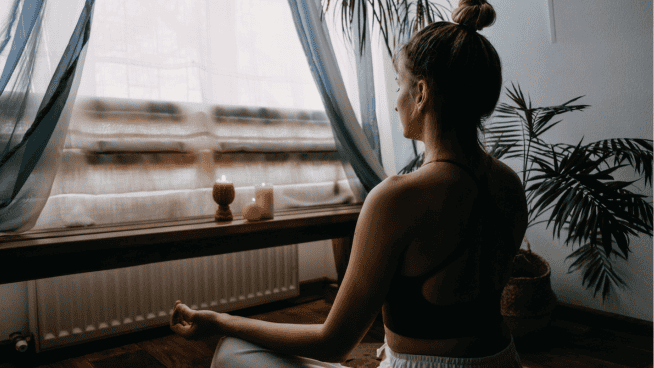What the Heck Is Pure Barre and Why Should Athletes Do It?
What exactly is Pure Barre?
Pure Barre, started by a former dancer in 2001, is a ballet barre-incorporating exercise class that combines elements of Pilates, weight lifting and ballet into one workout. Focusing on the abs, thighs, legs and overall core, Pure Barre consists of a series of small, isometric movements that engage your smaller, lesser -known muscles. It is considered a high-intensity but low-impact workout, since no jumping or bouncing are involved.
How popular has it become?
Pure Barre now has 237 studios open in the United States, a 50 percent increase over 2013.
What does a typical class entail?
A typical Pure Barre class lasts for 55 minutes and is attended by no more than 20 people. Class opens with a light warm-up to get the body warm before stretching. It can include Planks, Bicep Curls with light weight, or Push-Ups. From there, participants move to the ballet bar, used for stabilization during work on the arms, legs and thighs. The workout ends with core and abdominal work. The class wraps up with stretching.
RELATED: 15 Core Strengthening Exercises for Athletes
“Everything we do, we get your muscles to the point of fatigue or shaking,” said Lori Standen, a Pure Barre instructor and owner of two studios in Cleveland, Ohio. “The first time people have their legs shake uncontrollably, they get freaked out because it doesn’t happen with most exercises. But that’s when you know you’re changing those muscles.”
What are some other examples of moves done in class?
Chair
- Face the barre with your arms fully extended and your hands gripping the barre.
- Lower yourself into a position as if you were sitting in a chair.
- Move your body down an inch, then up an inch.
- Repeat movement 20 times.
Extended Leg
- Stand with your back against the barre, with your heels together and your hands resting lightly on the barre.
- Extend your left leg with your toes pointed out.
- Bend your right leg slightly while pulling your tailbone in toward your spine.
- Make tiny circles with your extended leg for 30 seconds, then reverse direction for 30 more.
- Repeat with your other leg.
Abs Against the Wall

Photo by Danielle O’Donnell
- Sit with your back, head and shoulders flat against the wall.
- Bend your knees, keeping your legs hip-width apart.
- Flex your feet so your heels press into the ground and your toes face the ceiling.
- Reach your arms up to grab onto the barre with a reverse grip. (Keep your back flat against the wall the entire time.)
- Lift your right heel 1/2 inch off ground.
- Do this 20 times. Repeat with your left leg.
- Finally, bring your legs together, extend them out long, and lift them 15 times, keeping them off the ground for all 15 reps.
Hundreds

Photo by Kollene H. Carlsson
- Lie on your back, draw your knees up, lift your head and shoulders and bring your chin to your chest as you come into a tight ball.
- Keeping your upper body lifted, extend your legs diagonally and extend your arms out to your sides.
- Pump your arms up and down four times, then hold your arms still and curl your torso up and down twice.
- Repeat this series 10 times
Roll-Ups

Photo by Danielle O’Donnell
- Lie on the floor with your knees bent and your feet planted on the ground.
- Curl up using your abdominals and leading with your arms.
- Lift your shoulders off the ground and bring your legs to a table top position.
- Finally, extend your legs diagonally so your body makes a “V” shape.
- Reverse the move to come back down to the floor with your knees bent and arms resting on the floor above your head.
- Repeat four times.
Scissor Curl

Photo by Kollene H. Carlsson
- Lie on your back with your shoulders and feet raised and with your right leg extended up and behind your knees or thighs.
- Slowly curl up and down an inch for 30 seconds.
- Continue with smaller and faster curls for 30 seconds.
- Bring your left arm up to your ear and curl for 30 seconds.
- Reach your left arm toward your right ankle and curl for 30 seconds.
- Switch sides and repeat the sequence.
Why should athletes try it?
For athletes looking to improve their flexibility, core strength and balance, Pure Barre can help.
“In any form of sports or fitness, stretching is important, but I think there are a lot of misconceptions about stretching prior to working out,” Standen said. “I always think of the rubber band analogy, where your muscles are like rubber bands. If you have a full, dry rubber band and you start stretching it, it’s probably going to break. But if your body is warm and your muscles are warm and you stretch them at that point, you will have a more pliable muscle and you will be able to increase flexibility.”
Core strength work is also beneficial for athletes. It improves your balance, which can be huge for both football and basketball players. Los Angeles Clippers power forward Blake Griffin credits his commitment to improving core strength with producing his best season yet. Another benefit of Pure Barre’s focus on core strength and abdominals is that athletes who commonly experience back problems can attempt to alleviate them.
“If it’s a common back injury, a lot of the time someone’s front abs are not strong enough to hold up their whole body,” Standen said. “Without the ability of your abs to help you, you put all that weight on your back.”
RECOMMENDED FOR YOU
MOST POPULAR
What the Heck Is Pure Barre and Why Should Athletes Do It?
What exactly is Pure Barre?
Pure Barre, started by a former dancer in 2001, is a ballet barre-incorporating exercise class that combines elements of Pilates, weight lifting and ballet into one workout. Focusing on the abs, thighs, legs and overall core, Pure Barre consists of a series of small, isometric movements that engage your smaller, lesser -known muscles. It is considered a high-intensity but low-impact workout, since no jumping or bouncing are involved.
How popular has it become?
Pure Barre now has 237 studios open in the United States, a 50 percent increase over 2013.
What does a typical class entail?
A typical Pure Barre class lasts for 55 minutes and is attended by no more than 20 people. Class opens with a light warm-up to get the body warm before stretching. It can include Planks, Bicep Curls with light weight, or Push-Ups. From there, participants move to the ballet bar, used for stabilization during work on the arms, legs and thighs. The workout ends with core and abdominal work. The class wraps up with stretching.
RELATED: 15 Core Strengthening Exercises for Athletes
“Everything we do, we get your muscles to the point of fatigue or shaking,” said Lori Standen, a Pure Barre instructor and owner of two studios in Cleveland, Ohio. “The first time people have their legs shake uncontrollably, they get freaked out because it doesn’t happen with most exercises. But that’s when you know you’re changing those muscles.”
What are some other examples of moves done in class?
Chair
- Face the barre with your arms fully extended and your hands gripping the barre.
- Lower yourself into a position as if you were sitting in a chair.
- Move your body down an inch, then up an inch.
- Repeat movement 20 times.
Extended Leg
- Stand with your back against the barre, with your heels together and your hands resting lightly on the barre.
- Extend your left leg with your toes pointed out.
- Bend your right leg slightly while pulling your tailbone in toward your spine.
- Make tiny circles with your extended leg for 30 seconds, then reverse direction for 30 more.
- Repeat with your other leg.
Abs Against the Wall

Photo by Danielle O’Donnell
- Sit with your back, head and shoulders flat against the wall.
- Bend your knees, keeping your legs hip-width apart.
- Flex your feet so your heels press into the ground and your toes face the ceiling.
- Reach your arms up to grab onto the barre with a reverse grip. (Keep your back flat against the wall the entire time.)
- Lift your right heel 1/2 inch off ground.
- Do this 20 times. Repeat with your left leg.
- Finally, bring your legs together, extend them out long, and lift them 15 times, keeping them off the ground for all 15 reps.
Hundreds

Photo by Kollene H. Carlsson
- Lie on your back, draw your knees up, lift your head and shoulders and bring your chin to your chest as you come into a tight ball.
- Keeping your upper body lifted, extend your legs diagonally and extend your arms out to your sides.
- Pump your arms up and down four times, then hold your arms still and curl your torso up and down twice.
- Repeat this series 10 times
Roll-Ups

Photo by Danielle O’Donnell
- Lie on the floor with your knees bent and your feet planted on the ground.
- Curl up using your abdominals and leading with your arms.
- Lift your shoulders off the ground and bring your legs to a table top position.
- Finally, extend your legs diagonally so your body makes a “V” shape.
- Reverse the move to come back down to the floor with your knees bent and arms resting on the floor above your head.
- Repeat four times.
Scissor Curl

Photo by Kollene H. Carlsson
- Lie on your back with your shoulders and feet raised and with your right leg extended up and behind your knees or thighs.
- Slowly curl up and down an inch for 30 seconds.
- Continue with smaller and faster curls for 30 seconds.
- Bring your left arm up to your ear and curl for 30 seconds.
- Reach your left arm toward your right ankle and curl for 30 seconds.
- Switch sides and repeat the sequence.
Why should athletes try it?
For athletes looking to improve their flexibility, core strength and balance, Pure Barre can help.
“In any form of sports or fitness, stretching is important, but I think there are a lot of misconceptions about stretching prior to working out,” Standen said. “I always think of the rubber band analogy, where your muscles are like rubber bands. If you have a full, dry rubber band and you start stretching it, it’s probably going to break. But if your body is warm and your muscles are warm and you stretch them at that point, you will have a more pliable muscle and you will be able to increase flexibility.”
Core strength work is also beneficial for athletes. It improves your balance, which can be huge for both football and basketball players. Los Angeles Clippers power forward Blake Griffin credits his commitment to improving core strength with producing his best season yet. Another benefit of Pure Barre’s focus on core strength and abdominals is that athletes who commonly experience back problems can attempt to alleviate them.
“If it’s a common back injury, a lot of the time someone’s front abs are not strong enough to hold up their whole body,” Standen said. “Without the ability of your abs to help you, you put all that weight on your back.”













